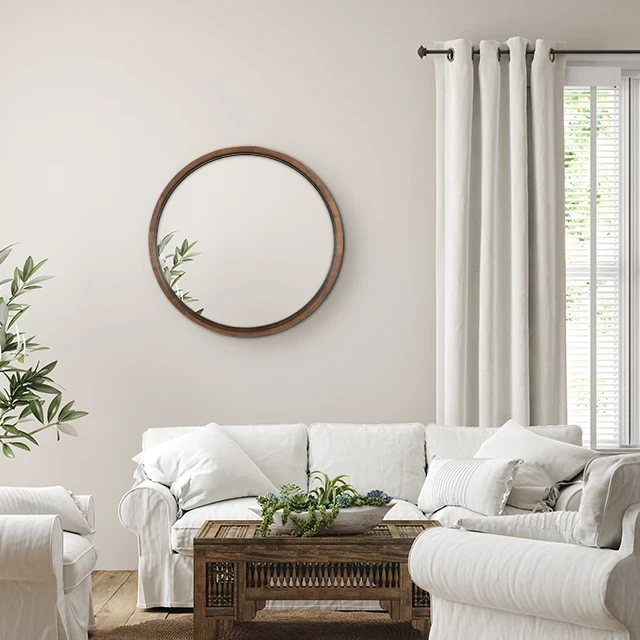Hanging a
wall mirror can be a transformative addition to any room, enhancing both aesthetics and functionality. Whether you're looking to brighten a dark hallway, add depth to a living space, or simply need a place to check your appearance, the right wall mirror can make all the difference. In this comprehensive guide, we'll walk you through everything you need to know to hang a wall mirror securely and stylishly.
1. Preparation: The Key to Success
Before you start drilling or applying adhesive, it's crucial to prepare thoroughly. Here are the essential steps:
A. Assess Your Wall Structure
Different wall materials require different hanging methods. Drywall, plaster, and concrete each have their own quirks. For drywall, locating studs is essential for heavy mirrors, as they provide the most secure anchor. Use a stud finder to mark these points. For plaster or concrete walls, you may need special anchors or screws.
B. Choose the Perfect Location
Where you hang your mirror can impact both its functionality and visual appeal. Consider the room's lighting and layout. For example, placing a mirror opposite a window can maximize natural light and create the illusion of more space. In a bathroom, above the sink is practical, while in a living room, above a fireplace or console table can be a stunning focal point.
C. Gather the Necessary Tools and Materials
Having the right tools on hand will make the process smoother. Essential items include a level, measuring tape, pencil, drill, and appropriate hardware like screws, anchors, or adhesive strips. If you're using a wire hanging method, ensure you have D-rings and picture wire that can support the mirror's weight.
2. Hanging Methods: Choosing the Right One
There are several methods for hanging mirrors, each with its own advantages. Here are four popular options:
A. Traditional Wire Hanging
This classic method involves attaching a wire to D-rings on the back of the mirror. It allows for flexibility in adjusting the height and ensures a secure connection to wall hooks. This method is ideal for framed mirrors and adds a touch of elegance to any room.
B. French Cleat Installation
For a modern, streamlined look, French cleats are an excellent choice. This method involves attaching a cleat to the wall and its counterpart to the back of the mirror, allowing for a flush mount. It's perfect for frameless mirrors and provides a clean, minimalist aesthetic.
C. Adhesive Hooks and Strips
If you prefer a drill-free option, adhesive hooks and strips are a convenient solution. These can support various mirror weights and adhere to different wall surfaces. They are ideal for renters or those who want to avoid damaging walls.
D. Mirror Clips for Frameless Mirrors
Frameless mirrors require a specific approach. Mirror clips, often made of metal or plastic, grasp the edges of the mirror to keep it firmly in place. This method ensures stability while allowing the mirror's design to shine without the distraction of a visible frame.
3. Ensuring Stability and Safety
Safety is paramount when hanging a mirror, especially if it's heavy or if you live in an earthquake-prone area. Here are some tips:
A. Weight Considerations
Always check the mirror's weight and choose hardware that exceeds its specifications. For example, if your mirror weighs 30 pounds, use anchors and screws rated for 40 pounds or more. This extra margin ensures stability and longevity.
B. Earthquake-Proofing
In regions prone to seismic activity, use earthquake-resistant anchors and brackets. Applying museum putty or earthquake gel to the back corners of the mirror can also minimize movement and reduce the risk of shattering.
C. Regular Maintenance
Periodically inspect the hardware to ensure screws and anchors remain tight. Address any issues promptly to prevent damage and ensure the mirror stays securely in place.
4. Styling Tips: Where to Hang Your Mirror
The placement of your mirror can significantly impact the room's overall look and feel. Here are some suggestions:
A. Hallways and Entryways
A large mirror at the end of a hallway can create the illusion of depth, making the space feel more expansive. In entryways, above a console table is a classic choice that adds both style and functionality.
B. Living Rooms
Above a fireplace or behind a sofa, mirrors can reflect light and create a sense of openness. Positioning them opposite windows maximizes natural light.
C. Dining Rooms
Reflecting a chandelier or artwork can add elegance and create a more sociable atmosphere. Ensure the mirror reflects something visually pleasing to enhance the room's ambiance.
D. Bedrooms and Bathrooms
In bedrooms, full-length mirrors on wardrobe doors or near windows are practical and stylish. In bathrooms, large mirrors above the sink are essential, but consider adding additional mirrors on opposite walls for more light and space.
5. Final Tips and Tricks
-
Adhere to Your Decor Style: Choose a mirror that complements your existing decor. Modern spaces benefit from sleek, metal frames, while rustic styles might prefer wood.
-
Grouping Mirrors: Hanging multiple mirrors together can add character. Ensure equal spacing between each mirror for a cohesive look.
-
Avoid Risky Placements: Be cautious about hanging mirrors on doors or above beds, as these areas can be less stable.

Conclusion:
Hanging a mirror involves more than just putting it on the wall. It's important to choose the right spot, method, and hardware to ensure it stays secure and looks good. You can use traditional methods like wire hanging or try modern options like adhesive strips. The main focus should be on making sure the mirror is stable and safe, while also matching your personal style.
If you have any questions or need more help, please
contact us. We want to ensure your mirror installation is safe and looks good in your home.


